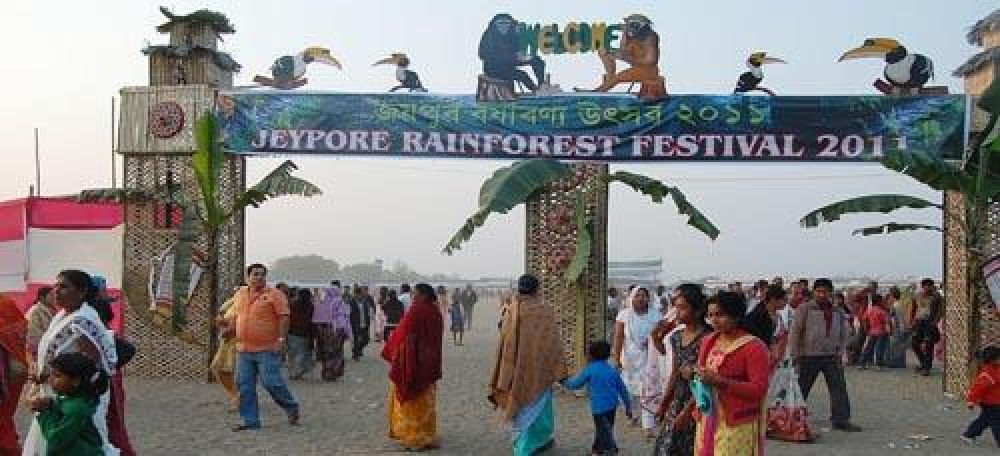

Jeypore Rainforest, located in the eastern fringe of India in Dibrugarh, Assam, is a vibrant ecosystem that has been a part of the rich tapestry of India's natural wonders. The history of tourism in Jeypore Rainforest is relatively recent compared to other historical sites in India.
In the early 1990s, India began to promote eco-tourism as a way to preserve its stunning natural habitats while also boosting local economies. Jeypore Rainforest, with its rich biodiversity and unique landscape, became part of this initiative. As part of Assam's environmental conservation efforts, restricted tourism was introduced to allow people to experience the forest's beauty without causing significant harm to the ecosystem.
By the early 2000s, Jeypore Rainforest started gaining popularity among niche travelers who were looking for off-the-beaten-path experiences. The Assam government along with several NGOs worked to provide better access while ensuring that tourism development did not disrupt the area's environmental integrity. Basic infrastructure such as guided tours, nature trails, and eco-friendly lodging options were developed. This careful balance was key in promoting sustainable tourism.
In recent years, with an increased focus on sustainable travel, Jeypore Rainforest has become more popular. It attracts nature enthusiasts, researchers, and photographers who are drawn to its unspoiled beauty and the possibility of witnessing rare species of flora and fauna found in the region.
The Jeypore Rainforest is not only a spectacular tourist destination but also an important ecological habitat. It is home to numerous species of wildlife, including several that are endangered. The forest acts as a crucial corridor for the migration of elephants and is recognized for its conservation efforts pertaining to the Hoolock Gibbon, India's only ape species.
Community Involvement: In recent times, there has been a strong emphasis on involving local communities in eco-tourism activities. This approach ensures that tourism supports the local economy and encourages environmental stewardship among residents.
Digital Outreach: With the rise of the internet, there has been a surge in digital marketing campaigns targeted at potential tourists, showcasing the unique experiences offered by Jeypore Rainforest. Social media and travel blogging have particularly influenced the visibility and accessibility of the forest to a global audience.
Adventure and Wellness Tourism: Current trends are also moving towards combining adventure with wellness. Tourists are seeking activities like bird watching, jungle treks, and yoga retreats within the tranquility of the rainforest. These offerings cater to travelers looking for both excitement and relaxation amidst nature.
When planning a trip to Jeypore Rainforest, it's important to consider the seasonal variations in weather. The best time to visit is between November and April, when the climate is more conducive to exploration. Visitors should be prepared with appropriate clothing, as the rainforest environment can be unpredictable.
Sustainable Travel Tips:
Lastly, by choosing to visit Jeypore Rainforest, tourists play an active role in the conservation efforts and help maintain this precious part of Assam's natural heritage for future generations.